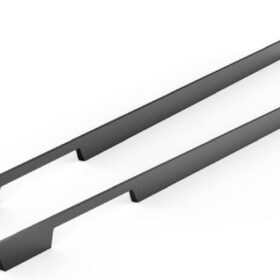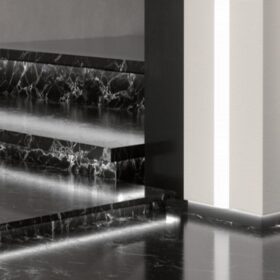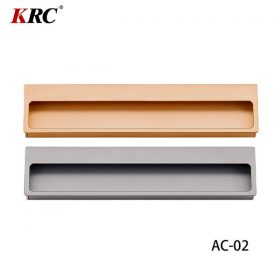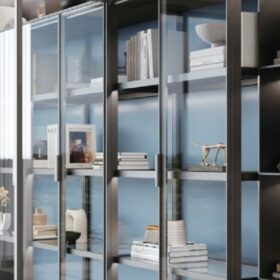Building Modular Cabinets with Aluminium Profiles
Building Modular Cabinets with Aluminum Profiles
Imagine the convenience of assembling cabinets without the hassle of complex tools or extensive woodworking skills. Building modular cabinets with aluminum profiles offers this exact solution, revolutionizing cabinetry construction. Here’s a comprehensive guide to this innovative approach:
Advantages of Aluminum Profiles
Durability: Aluminum profiles are incredibly strong and resistant to rust, ensuring longevity and resilience.
Lightweight: Unlike traditional wooden cabinetry, aluminum profiles are significantly lighter, making installation and transportation easier.
Versatility: Profiles come in various shapes and sizes, allowing for customizable designs that accommodate specific storage needs.
Modern Aesthetics: Aluminum’s sleek and contemporary look enhances any interior décor, making it an ideal choice for modern or industrial-style spaces.
Components and Assembly
Modular cabinet systems consist of:
Profiles: Pre-cut aluminum extrusions that form the framework of the cabinets.
Connectors: Specialized fasteners that securely join the profiles at various angles.
Accessories: Shelves, drawers, and other components for organizing the cabinet interior.
Assembly involves connecting the profiles using connectors, creating a rigid and stable structure. The modular design allows for easy modification and reconfiguration, adapting to changing storage requirements.
Assembly Process
1. Plan the Design: Determine the size and configuration of the cabinet based on specific storage needs and space constraints.
2. Cut Profiles: Precisely cut the aluminum profiles to the desired lengths using a miter saw or a cutting tool.
3. Connect Profiles: Insert the profiles into the designated connectors and secure them firmly using screws or bolts.
4. Assemble Framework: Connect the profiles together to form the basic framework of the cabinet, ensuring square and level alignment.
5. Install Accessories: Add shelves, drawers, or other components to organize and customize the cabinet interior.
6. Finalization: Complete the cabinet by adding doors, handles, or any additional finishing touches as desired.
Applications and Customization
Modular aluminum cabinets are versatile and suitable for numerous applications, including:
Home Storage: Kitchen cabinets, bathroom vanities, closets, and utility rooms.
Commercial Settings: Office furniture, retail displays, and industrial storage systems.
DIY Projects: Customizing home décor, building storage units, or creating unique furniture pieces.
The modular design allows for endless customization options, enabling users to create cabinets that perfectly align with their specific requirements.
Conclusion
Building modular cabinets with aluminum profiles offers a convenient, durable, and aesthetically pleasing solution for various storage needs. With its lightweight design, versatility, and ease of assembly, this innovative approach is transforming cabinetry construction. Whether for home, commercial, or DIY projects, aluminum profiles provide the means to create custom cabinets that meet precise storage requirements and enhance any interior space.
-
2024-09-14Exploring the Different Types of Modern Closet Door Pulls and Their Applications
-
2024-09-14How Cabinet Door Pull Handles Support High-Traffic Areas
-
2024-09-06Cost-Benefit Analysis of Investing in High-Quality Long Wardrobe Door Handles
-
2024-09-04How Flat Cabinet Handles Enhance Modern Interior Design
-
2024-11-29Top Trends in Modern Kitchen Cabinet Pulls for 2024
-
2024-11-28The Ultimate Guide to Modern Kitchen Cabinet Pulls- Materials, Styles, and Tips
-
2024-11-27Elevate Your Kitchen Design with These Must-Have Modern Cabinet Pulls
-
2024-11-26Sleek and Stylish- The Best Modern Kitchen Cabinet Pulls for a Contemporary Look






